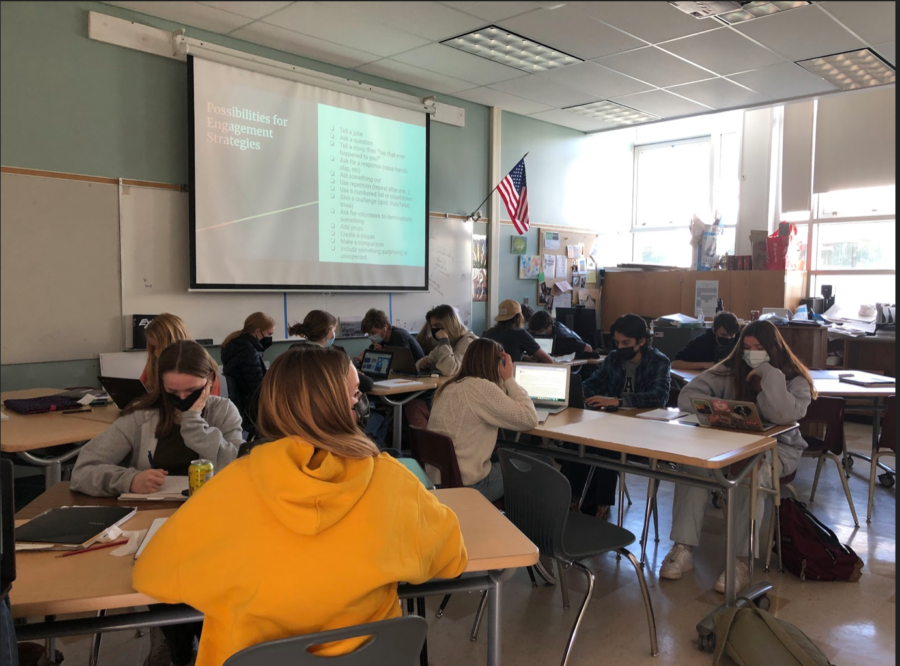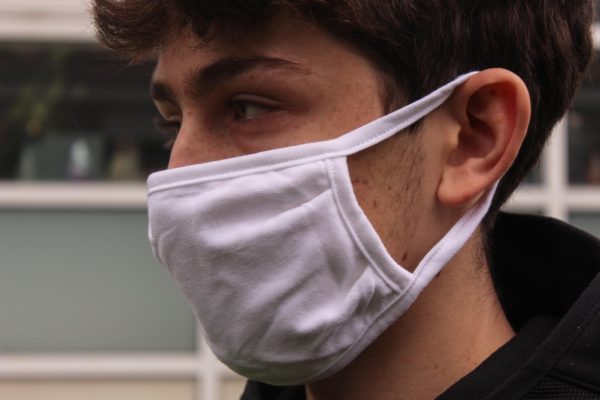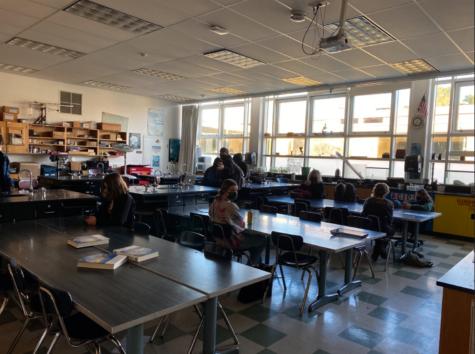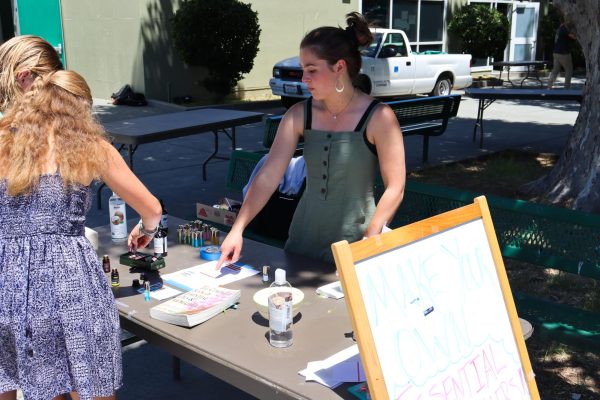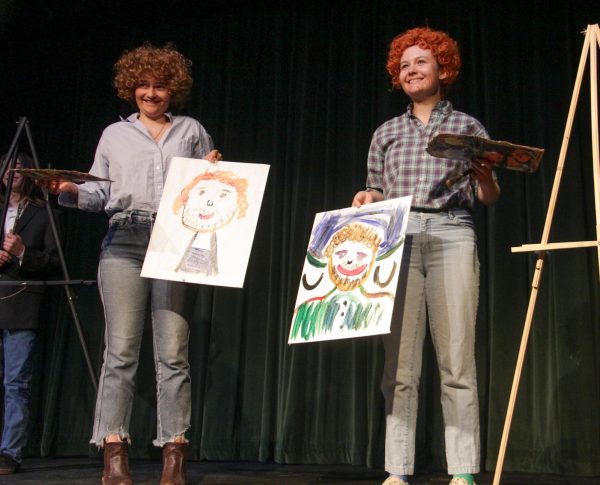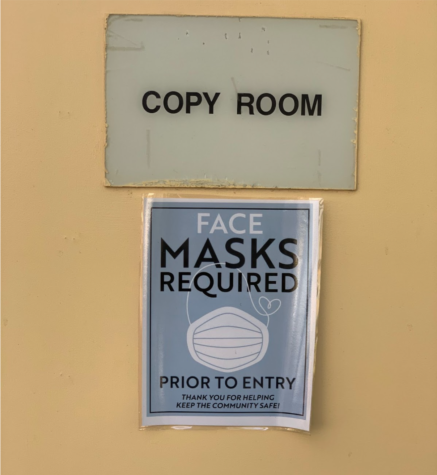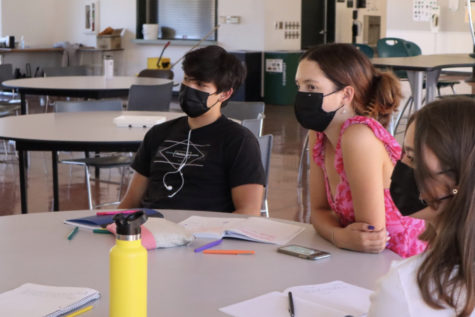Goodbye, Zoom: Remote learning ends as Omicron cases plummet
David Gutfeld’s 6th-period class works on a project, fully in person without zoom.
Due to an influx in cases of the new Omicron COVID-19 variant, AWHS required its teachers to allow sick or cautious students to join class on Zoom for the month of January after Winter Break. Despite the highly contagious characteristics of the COVID-19 Omicron variant, case numbers appear to be subsiding. As a result, the school terminated its requirement to offer Zoom to students, effective Jan. 31 via ParentSquare.
AWHS Spanish teacher, Señor José Anchordorqui, believes that Zoom is not optimal for learning, but should still be arranged in the interest of students’ health and safety.
“You have mostly 30 kids in-class to attend to, making it difficult over Zoom…it’s possible, you just have to make it a priority,” Anchordorqui said. “Making sure that people who are sick or can’t make it to school have that accessibility to materials and lectures so that they don’t feel any anxiety about missing out on something is a huge benefit.”
Throughout January, Anchordorqui noticed minimal class participation from the students on Zoom. He believes the main cause of this was that most were too sick with COVID-19 to completely participate in discussions.
“Participation depends on how much you are able to participate with [students]. If you can check in with them like I try to do, some are responsive and some aren’t. You wonder what’s going on, if they’re ok, if they’re really sick, or they’re just not engaging in anything,” Anchordorqui said.
Anchordorqui also believes difficult courses like language classes require students to fully grasp the material, and students attending Zoom may not receive the same connection as in-person students receive.
“It is very difficult to connect with kids over Zoom. I’m all about relationships, so if we’re here, we’re connecting and we’re able to see each other, and that’s the number one thing, especially for language. Everyone I heard from last year said that learning languages over zoom was near impossible,” Anchordorqui said.
It is very difficult to connect with kids over Zoom. I’m all about relationships, so if we’re here, we’re connecting and we’re able to see each other, and that’s the number one thing,
— Señor José Anchordorqui
AWHS sophomore Isobel Samlihan fell behind on assignments after attending online classes on Jan. 3 due to the COVID-19 Pfizer booster’s side effects.
“I think that there are good and bad things about Zoom, but mostly it seems to be helpful. Thankfully the teachers are helpful about missing school because of COVID and that’s a big part of students’ stress,” Isobel said.
The beneficial aspect of Zoom is its ability to provide sick students with material, keeping them involved with class activities. Isobel believes that one of the main concerns for sick students was falling behind in school. Avoiding issues like missing assignments is important to the AWHS staff and administration.
“They make sure we have all the information that we need when it comes to missing school but also it can be hard for the teachers to manage both groups. I missed school because of the effects of the booster, but thankfully I was able to go on Zoom and that made it a little easier,” Isobel said.
While Zoom is currently optional for teachers to provide, it is no longer a requirement, so most AWHS staff ensure that students have access to assignments through Canvas and by email communication.
Your donation will support the student journalists of Archie Williams High School. Your contribution will allow us to purchase equipment and cover our annual website hosting costs. Each donation will receive a magazine subscription for a year (6 copies a year), and become a part of the important work our publication is doing.
$35 -- Subscription to the magazine
$50 -- Silver Sponsorship
$75 -- Gold Sponsorship
$100 -- Platinum Sponsorship

Avery is a sophomore, in her first year of journalism. She enjoys going to Bolinas to surf, getting oreo ice cream from Scoop with friends and cooking...


